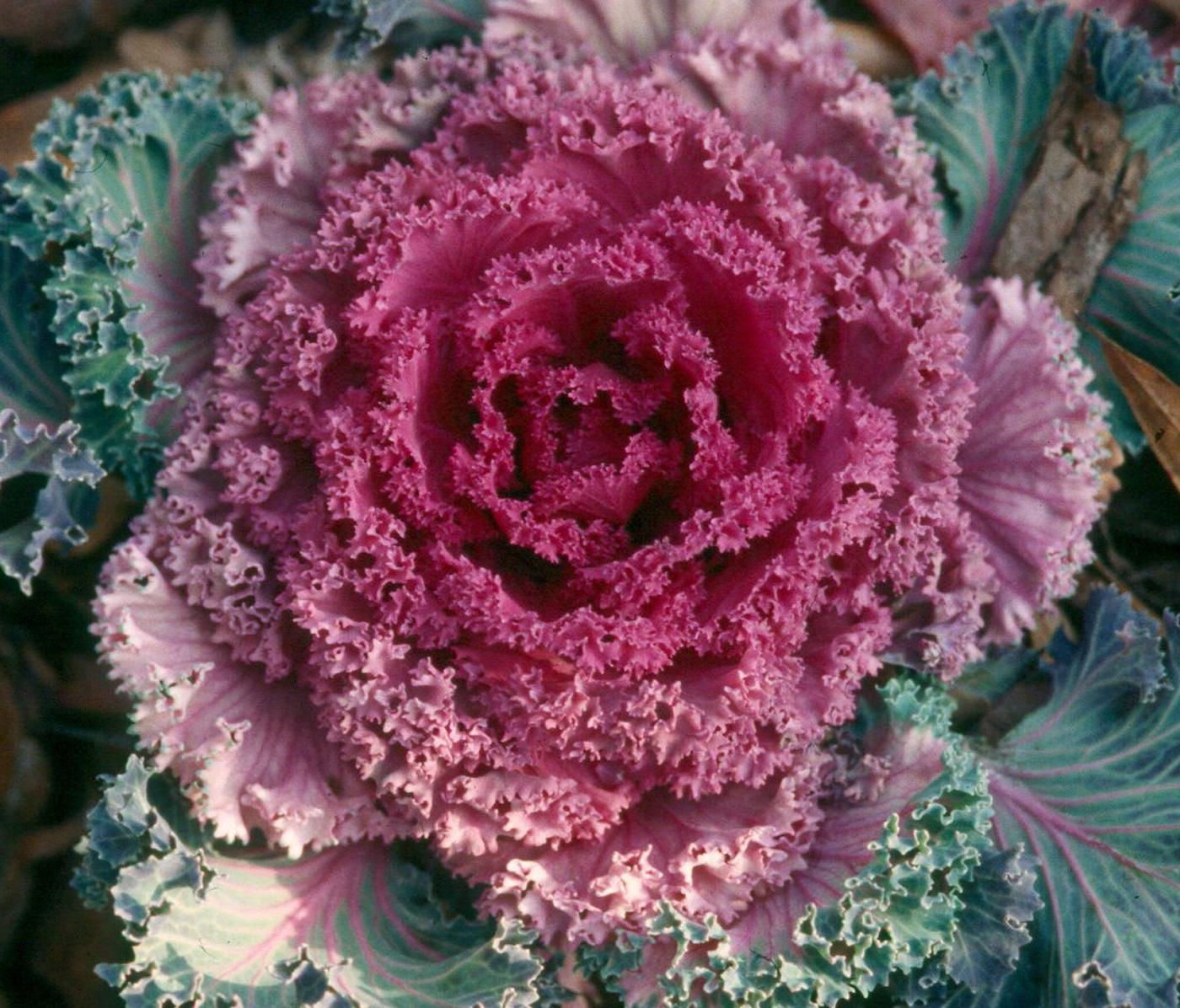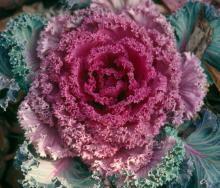Information Possibly Outdated
The information presented on this page was originally released on November 12, 2001. It may not be outdated, but please search our site for more current information. If you plan to quote or reference this information in a publication, please check with the Extension specialist or author before proceeding.
Add winter color with flowering cabbage, kale
By Norman Winter
MSU Horticulturist
Central Mississippi Research & Extension Center
Some of our prettiest landscape plants for fall and winter are sitting in black plastic containers at garden centers across the South. Unfortunately, flowering kale and cabbage seldom receive the same attention as pansies, violas and snapdragons.
If gardeners could only see the displays using flowering kale and cabbage at botanical gardens such as Bellingrath near Mobile, then they could see how the winter landscape could be made more beautiful. The flowering kale and cabbage produce brightly colored foliage in shades of green, purple, lavender and white and excel in the southern winter landscape. In the northern third of the state they should be used as a late winter or spring crop.
These plants are among the easiest to grow. Prepare soil by incorporating 3 to 4 inches of organic matter and 2 pounds of a slow-release, 12-6-6 fertilizer per 100 square feet of bed space. Set the transplant to a depth just slightly below the bottom set of leaves. The plants will reach 6 to 12 inches in height, and you will want to space them 12 to 18 inches apart. The fall season has been super for planting and now would be a good time to put some in your beds.
Be sure and add a good layer of mulch after planting to help stabilize soil temperatures and conserve moisture. Flowering kale and cabbage are very cold hardy and usually come through the winter unscathed. If record cold is forecasted, these plants can be completely covered with pine straw until the weather has warmed.
Kale and cabbage need good drainage yet must be kept moist and fed to keep them growing vigorously. Pay especially close attention as dry, cold fronts have a tendency to really deplete the available moisture. Feed with light applications of the pre-plant fertilizer every four to six weeks. The colors will intensify as the temperatures start to get cold.
Unfortunately, the same cabbage loopers that attack broccoli can be a pest on these plants as well. Watch and treat as needed with Bacillus thuringensis. This organic pest control is safe and poses no threat to gardeners
Flowering kale and cabbage excel with beds of brightly colored pansies, violas, panolas and snapdragons. I am partial to the purple types grown with yellow pansies. They also work great together. For a really showy display, try bold drifts of pink or purple kale next to another drift of a white variety. Try planting a large bed of narcissus behind the kale or cabbage.
Kale and cabbage also are exceptional in large containers where you might place three in a triangular design. Plant tulips or daffodils in the center of the triangle and then place pansies around the edges.
There are many more varieties than gardeners realize. The Chidori series with its fringed ruffled leaves and intense colors have become the most popular. The Peacock and Sparrow series also come recommended as some of the prettiest. If your favorites are the round-leaf types, then try the Dynasty series.
Flowering kale and cabbage are not eaten, but the leaves do make very decorative garnishes for holiday feasts.








